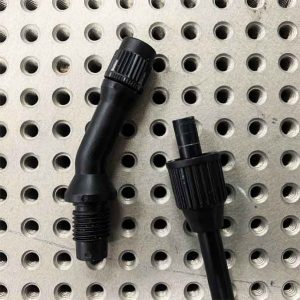CT Stacking to Analyze Assembly Positions

CT Stacking
CT stacking is the concept of overlaying multiple CT scans and analyzing them back to a common coordinate system. This has been attributed as 4D CT, but is not quantifying any real time changes to data during the scan. CT stacking allows the user to locate, analyze, and quantify variable changes in assembly conditions. The failure exists but may only identifiable during specific assembly advancements.
CT Stack Clip Reporting Method
With an average CT data set using approximately 25 GB, the least intense method for visualization is a clip stepping through each sequence advancement of the assembly. In this case study we were interrogating a nozzle for leak paths. The nozzle was leaking in the closed position, but would stop leaking intermittently. So, we scanned the nozzle once every 45 degrees over two revolutions and then used the nozzle base as a reference frame.
Rotational Slice Clip
CT Stack clips only show one slice view through all data sets. With 16 data sets in hand there is much more information available. The fastest way to analyze cylindrical data like this specimen is to create a planar-axis view, and then rotate around that central axis.
CT Slice image showing leak path through gasket and threads

CT data converted to .stl mesh file for measurements






